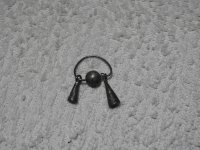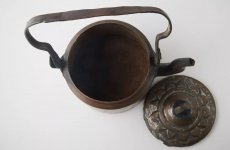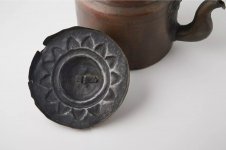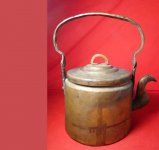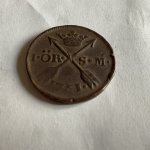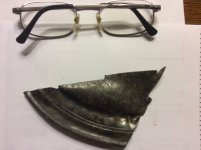 I found this item yesterday along the Columbia River. The item is "plyable" so I assume it to be pewter. But it could be copper as well. It was buried six inches deep, yet emitted a strong signal so I dug it. I almost threw it away when the dirt pile did not yield a buckle as hoped for! Later I noticed the intricate markings on one side (lower/outer side of plate), and that it has been cut by shears. Which got me thinking.......
I found this item yesterday along the Columbia River. The item is "plyable" so I assume it to be pewter. But it could be copper as well. It was buried six inches deep, yet emitted a strong signal so I dug it. I almost threw it away when the dirt pile did not yield a buckle as hoped for! Later I noticed the intricate markings on one side (lower/outer side of plate), and that it has been cut by shears. Which got me thinking.......Why would a person take the time to cut a plate up before tossing it out? Who in the Oregon fur trading era would "dull" their cutting devices to clip a plate?
I have heard of early mariners using "all things" metal to trade with the indigenous population. Also, the Columbia River had a lot of ship traffic to Hudson’s trading post (fort) and many trappers in the field upstream. I suspect it was originally owned by a sailor or a trader.
Any advice from the experts on this sub forum would be greatly appreciated!
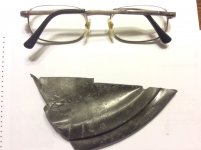
Amazon Forum Fav 👍
Upvote
0




